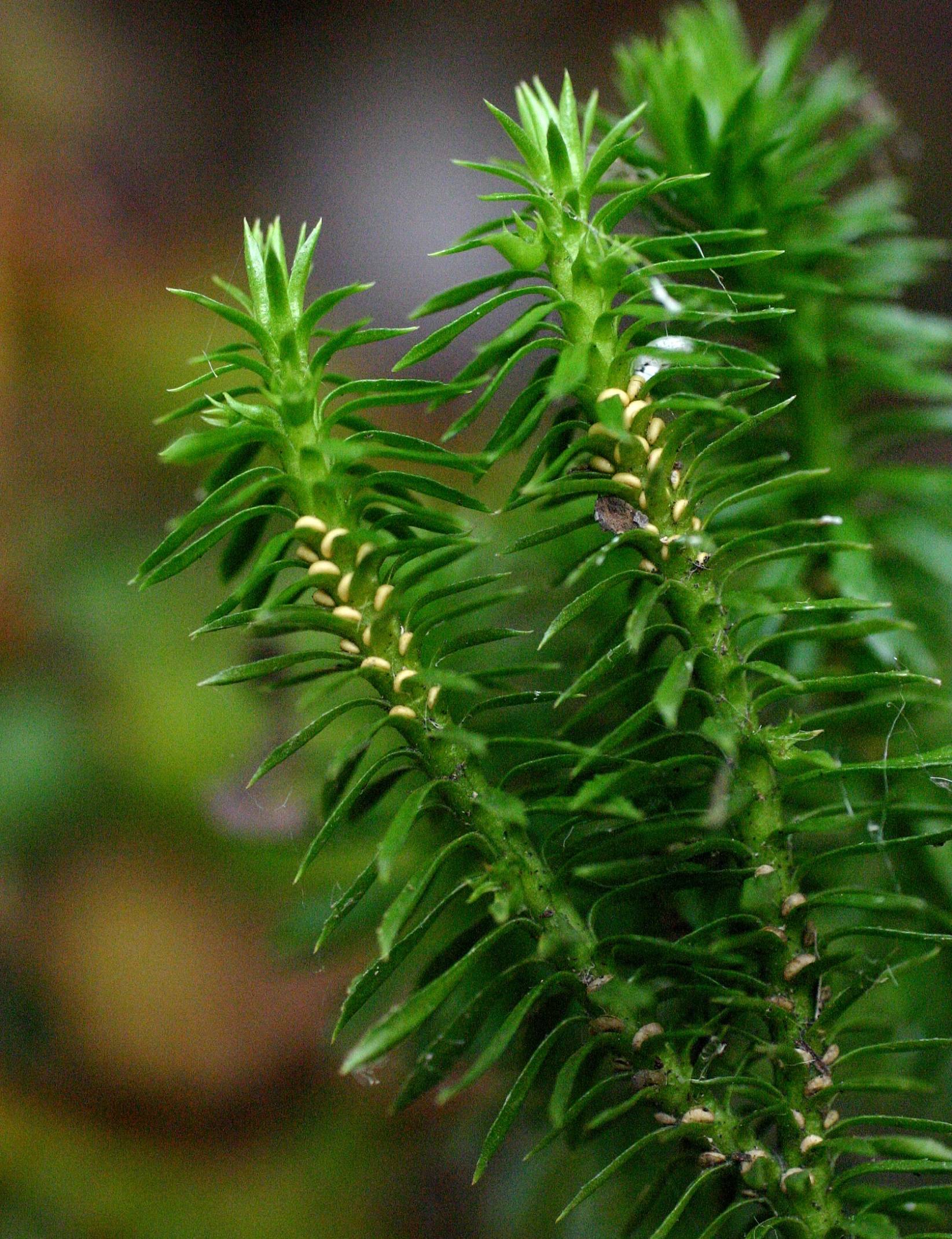|
Lycopodiaceae |
|
|
Plants terrestrial, on rock, or epiphytic. Roots emerging near origin, or growing through cortex and emergent some distance from origin. Horizontal stems present or absent, mainly protostelic, in some species becoming actino- or plectostelic, on substrate surface or subterranean, or forming stolons. Upright shoots simple or branched, usually conspicuously leafy at least at base; abscising gemmae formed by reduced lateral shoots. Lateral shoots present or absent, simple or branched, branching pattern dichotomous and sometimes pseudomonopodial; leaves uniform or dimorphic or trimorphic. Upright and lateral shoots round or flat in cross section; leaves on subterranean parts flat, appressed, nonphotosynthetic, and scalelike; leaves on aerial parts appressed, ascending, or spreading, with 1 central unbranched vein, needlelike to lanceolate to ovate, remote to dense and imbricate, with or without basal and/or mucilage canals. Strobili sessile or stalked, upright, nodding, or pendent. Sporangia solitary, adaxial near leaf base or axillary; subtending leaves (sporophylls) unmodified and photosynthetic to much modified, nonphotosynthetic, reduced, and aggregated in strobili; sporangia reniform to globose, thick-walled with hundreds of spores, outer walls variously modified. Spores all 1 kind, trilete, thick-walled, surfaces pitted to small-grooved, rugulate, or reticulate. Gametophytes subterranean and nonphotosynthetic or surficial and photosynthetic. The Lycopodiaceae are an extremely diverse, ancient family. The family may contain even more than the estimated 400 species because the tropical members and the very large genus Phlegmariurus are still poorly known. The relationships among genera of Lycopodiaceae are not well understood because large evolutionary gaps exist among most genera. Some of the genera, notably Diphasiastrum , Huperzia , and Lycopodiella , exhibit extensive interspecific hybridization, which has caused much taxonomic confusion in the past. Differences in expressions of many of the generic characters are subtle, and some of the characters are microscopic.
|
|

